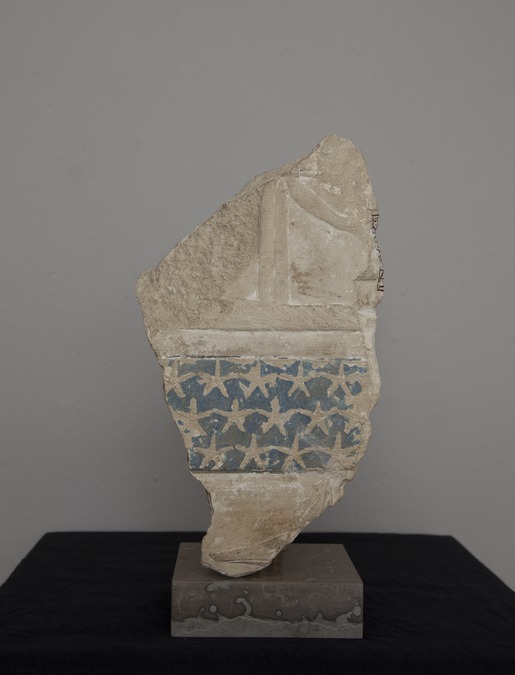Fragment from the Palace of Apries
Summary
Fragmented relief with a upper scene with an ankh sign. Below, three rows of stars on a blue background.
Description of object
Two scenes are divided by a panel with three rows of stars indicated horizontally. The stars are enlarged versions of the hieroglyph for the word ‘sky’, thus the rows represent the sky. The upper scene shows remains of an ankh sign, which is placed on a horizontal base line. The sign has a human arm attached to it. The lower scene carries a representation of the Wepwawet standard, with only the pointed muzzle and upright ears of the Wepwawet jackal preserved.
Choice of methods
Visual examination
- Macroscopic
Technical imaging
- UV
- VIL
Bibliography
C. Brøns, K. Lund Rasmussen, M. Melchiorre di Crescenzo, R. Stacey, A. Lluveras-Tenorio (2018) Painting the Palace of Apries I: Ancient binding media and coatings of the reliefs from the Palace of Apries, Lower Egypt, Heritage Science 6:6 https://heritagesciencejournal.springeropen.com/articles/10.1186/s40494-018-0170-9
T. Bagh (2011), Finds from W.M.F. Petrie’s Excavations in Egypt in the Ny Carlsberg Glyptotek, in Meddelelser fra Ny Carlsberg Glyptotek. No. 13 Copenhagen, 37-43.
M. Jørgensen (2009), Egypt IV Late Egyptian Sculpture 1080 BC-AD 400. Ny Carlsberg Glyptotek, Copenhagen, 85, cat. no. 25.2.
- ÆIN 1053
- Fragment
- 26th dyn. 589-568 B.C.E.
- Egypt: Late Period
- Limestone
- W. M. F. Petrie’s excavations at the north end of Memphis unearthed in 1909 remains of the royal palace of Apries. That same year the Glyptotek in Copenhagen received a number of painted limestone relief fragments belonging to the Palace.
- H. 24 cm.; W. 14 cm.; D. 13 cm.



